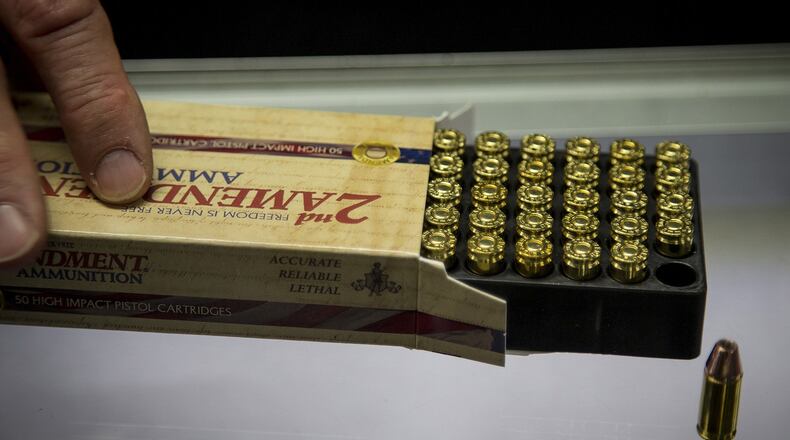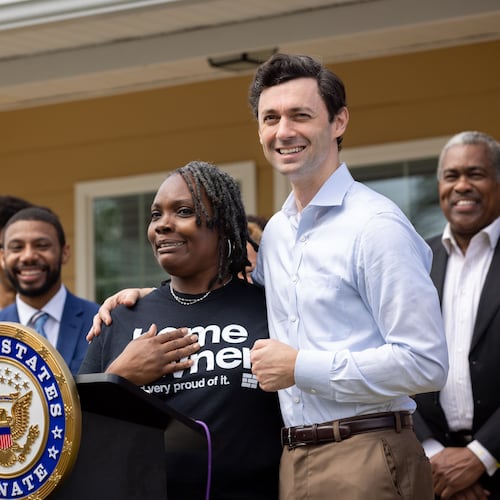Watching the debates in Congress about everything from impeachment to the budget, you may think that Democrats and Republicans can’t agree on anything. Yet the $25 million for gun violence research in the FY 2020 appropriations agreement shows that’s not true. Together, Democrats and Republicans ended a 20-year moratorium on federally funded research that has left our country unprepared to address gun violence scientifically and systematically.
This is one of the most important and best things to happen this year. Why did this happen now?
Nobody in Washington wants to wake up to another headline about a mass shooting. Everybody wants to reverse the rising trend of veteran suicides. Democrats and Republicans alike want to find ways to prevent the next murder.
The challenge of confronting gun violence can be intimidating in scope. More than 35,000 Americans are killed every year by guns on average, and two-thirds of those deaths are suicides. Yet this may be the first time that the full political spectrum in Washington has united to find solutions.
As two people who have spent their professional careers studying gun violence, we know there is bipartisan public policy that can help reduce these numbers. The challenge is funding the research that can help point us in the right direction. That’s why we’re so heartened by the news that Congress, for the first time in decades, is ready to spend millions on gun violence research.
There are solutions everyone can approve of, interventions that would prevent gun deaths – whether by suicide, homicide or unintentional shootings – and also protect the rights of law-abiding gun owners. We don’t yet know what many of those solutions will turn out to be because we know so little about what works to reduce gun violence and save lives. We know so little because unlike most other public health crises this country has faced, the federal government has not substantially invested in research to guide public policy when it comes to preventing gun violence.
With this funding, Congress can finally restart the search for solutions.
We were both in government in the late 1980’s and early 90’s, when two powerful forces collided. One of us headed the Department of Justice’s National Institute of Justice and the other led the Centers for Disease Control’s National Center for Injury Prevention and Control. The CDC launched a gun violence research program that was showing results. Gun lobbyists, in a significant exercise of political muscle, persuaded members of Congress to shut it down. The vehicle for this goal was the Dickey Amendment, which prohibits the CDC from using funds “to advocate or promote gun control.” Even though the amendment did not prohibit research, it was perceived as a warning shot across the bow. After 1998, the amount that the CDC spent on gun violence research fell by more than 90 percent.
Today we are all paying — and paying dearly — for this gap in knowledge.
But now the conditions are right to reverse course. Private funders are stepping up to start to fill the gap: the National Collaborative on Gun Violence Research, a partnership between Arnold Ventures and the RAND Corp., awarded $9.8 million to fund 17 major research projects earlier this year. This funding adds new capacity to the grants issued by groups like the Joyce Foundation and California Wellness Foundation.
Most important, last year Congress affirmed and the president signed the 2018 omnibus appropriations bill, which clarified that the Dickey Amendment only prohibits advocacy for gun control legislation, not research.
The House of Representatives and the Senate have now agreed to take the next step by approving $25 million to be evenly divided between the CDC and the National Institutes of Health to study gun violence and policy. We caution that there is no silver bullet to be discovered. Instead, progress will be incremental, one improvement at a time. And while $25 million will only begin to address all the research we need, it is an historic and important start towards identifying interventions that will keep guns out of the hands of those who should not have them while maintaining the rights of law-abiding gun owners.
Here in Atlanta, CDC has impressive resources to bring to this effort. In 1983 Atlanta’s Presidential Medal of Freedom winner, Bill Foege, acted as director of CDC to initiate the first effort looking at violence as a public health problem. He created the Violence Epidemiology Branch to focus the power of science on the problem of violence, making a bold bet that public health could show the world that violence was not just the inalterable consequence of “evil” in this world, but a problem that could be understood and solved. Today that bet has paid off. CDC has the largest collection in the world of professionals and scientists working on violence prevention. What began 36 years ago with 7 people has grown to 150 people working on many types of violence over the life span, from child abuse and child sexual abuse, to dating violence, intimate partner violence, sexual assault, homicide, gun violence, elder abuse and suicide.
CDC and NIH now have a chance to work together, tapping the expertise of federal departments and agencies — including the departments of justice, education, housing and urban development, and treasury — to bring new solutions to an urgent and important problem. This could be the beginning of a new day when we will no longer fear sending our children to school or letting them go to concerts or leaving them alone or letting them walk the streets of our communities, when veterans will no longer face greater risks of suicide at home than the risks they faced on the battlefield.
Objective, data-driven research that cuts through political gridlock is a key step to evidence-based, nonpartisan policy on guns in America. It will also be important for these federal agencies to develop a scale to measure the impact of different interventions on the rights of law-abiding gun owners. In addition to technical expertise, transparency, trust, collaboration and clarity will be very important.
This is a new day in Washington – something that gun rights advocates and gun control advocates can celebrate together. This is going to be a win for everyone.
Mark Rosenberg is president emeritus of The Task Force for Global Health and former director of the National Center for Injury Prevention and Control at the Centers for Disease Control and Prevention. Jeremy Travis is the executive vice president for criminal justice at Arnold Ventures and former director of the National Institute of Justice.
About the Author
Keep Reading
The Latest
Featured


